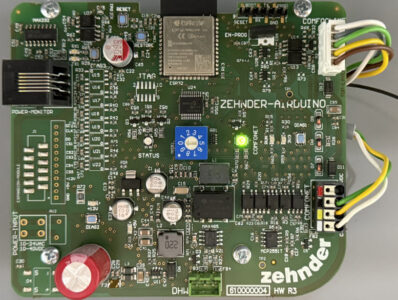Upgrading PostgreSQL in a Docker Container
This article describes the steps necessary to upgrade PostgreSQL to a new major version in a Docker environment. There are many articles on the subject, but I couldn’t find any that were complete, correct, and concise. So I wrote my own.

Info & Planning
Minor and Major Release Upgrades
To update between minor releases, e.g., 16.0 to 16.3, simply replace the PostgreSQL executables by incrementing the Docker image version tag and pulling a new image.
Upgrading to a new major release requires a little more work, though, because the internal storage format is subject to change.
Major Upgrade Process
As described in the documentation, there are multiple ways to perform a major upgrade. We’ll use the following method:
- Stop the application container to prevent DB writes.
- Create a full DB dump.
- Stop the PostgreSQL container.
- Rename (backup) the old DB data directory and create a new empty one in its place.
- Increment the PostgreSQL version number in your Docker compose file and pull the new image.
- Start the updated PostgreSQL container.
- Import the DB dump.
- Start the application container.
- Clean up.
Preparation
- Make sure that your application supports the new PostgreSQL version.
- Inspect the release notes of the new version you’re upgrading to and the intermediate versions.
Perform the Upgrade
Stop the Application Container
I’m assuming you have a Docker compose file with (at least) one application service and the PostgreSQL service. To stop the application container only, run:
docker compose stop APP_CONTAINER_NAME
Create a Full DB Dump
- Look up the name of your PostgreSQL user in your Docker configuration. In my case, it’s simply
postgres. - Run the dump command:
docker exec -it POSTGRESQL_CONTAINER_NAME pg_dumpall -U postgres > dump.sql - Inspect the dump file to make sure it looks correct and is not just an error message.
Stop the PostgreSQL Container
docker compose stop POSTGRESQL_CONTAINER_NAME
Backup the DB Data Directory
Back up the bind-mounted DB data directory db and replace it with a new empty folder:
mv db/ db-old/
mkdir db
Increment the PostgreSQL Version
Edit the Docker compose file, incrementing the image version.
Start the Upgraded PostgreSQL Container
Pull the new image and start the PostgreSQL container:
docker compose pull
docker compose up -d POSTGRESQL_CONTAINER_NAME
Verify the logs. Look for errors and make sure that the PostgreSQL version has actually changed:
docker compose logs --tail 100 --timestamps POSTGRESQL_CONTAINER_NAME
Import the DB Dump
docker exec -i POSTGRESQL_CONTAINER_NAME psql -U postgres < dump.sql
As above, optionally replace postgres with the name of your PostgreSQL user.
Start the Application Container
docker compose start APP_CONTAINER_NAME
Verify the logs:
docker compose logs --tail 100 --timestamps
Clean Up
- Delete the backup directory:
rm -rf db-old/ - Delete the dump file:
rm dump.sql - Delete the old PostgreSQL image:
docker image prune -a
Tips
Shell Access in the PostgreSQL Container
Run the following to get an interactive Bash shell in the PostgreSQL container:
docker exec -it POSTGRESQL_CONTAINER_NAME bash
Tested Scenarios
- Upgrade of PostgreSQL 15.6 to 16.3







2 Comments
Great tutorial. However I alwayss get an error when trying to Import the DB Dump (psql: error: connection to server on socket “/var/run/postgresql/.s.PGSQL.5432” failed: FATAL: database “synapseuser” does not exist). Whereby “synapseuser” is my PostgreSQL user. The docker compose .yaml is exactly the same, just with the newest postgres version. I double checked that the values do apply after running “docker compose pull” and
“docker compose up -d Matrix-DB” (my container name).
Any suggetions?!
There is a bug:
“`
docker exec -i POSTGRESQL_CONTAINER_NAME psql -U postgres < dump.sql
“`
Returns: "the input device is not a TTY"
Better is:
“`
docker exec -T POSTGRESQL_CONTAINER_NAME psql -U postgres < dump.sql
“`